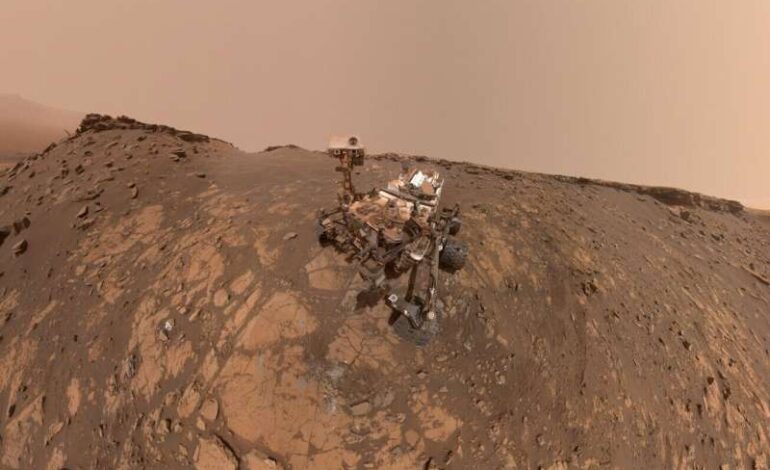Researchers Innovate Old Instruments to Search for Life on Mars

Researchers from Imperial College London have unveiled a groundbreaking approach to detecting potential life on Mars by repurposing established scientific instruments. In a recent study, PhD student Solomon Hirsch and his advisor Mark Sephton demonstrate how gas chromatograph-mass spectrometers, which have long been used in Martian exploration, can be adapted to identify signs of extant life through the analysis of organic biomarkers.
Innovative Use of Established Technology
The study focuses on Intact Polar Lipids (IPLs), organic compounds that are fundamental components of cell structures, particularly in single-celled organisms such as bacteria and archaea. Traditionally, IPL detection relies on solvent extraction methods that are unsuitable for in-situ analyses on other planets. Hirsch and Sephton’s research highlights a method employing pyrolysis-gas chromatography-mass spectrometry, which could be deployed on Martian missions.
Before conducting experiments, the researchers had to determine which IPL signatures to target in their analyses. Given that IPLs decompose rapidly, their presence could serve as a “viable life signature.” This means they typically exist only for a few hours to days post-mortem, breaking down into other compounds. Different microorganisms, such as bacteria and archaea, utilize distinct IPLs, resulting in varied signatures for living and deceased forms.
For living bacteria, the researchers identified 1,2-Dioleoyl-sn-glycero-3-phosphocoline, or DOPC, which degrades into oleic acid when the organism dies. Similarly, the living IPL for archaea was designated as DPPE, with its post-mortem counterpart known as archaeol. The team pyrolyzed samples of these compounds to analyze the resulting biomarkers.
Challenges and Future Prospects
The results revealed that DOPC produced a distinct additional biomarker called glyceryl monooleate, absent in samples of degraded oleic acid. Additionally, the team discovered that using a reagent called hexamethyldisilazane could enhance the sensitivity of their findings, although its practicality for in-situ measurements remains uncertain.
Despite these advancements, distinguishing between living IPLs and their degradation products for archaea proved more challenging. While the method may indicate former life, it is less effective for confirming the presence of currently living organisms. Furthermore, researchers face obstacles such as the interference of inorganic materials commonly found on Mars, like iron oxides and perchlorates, which can obscure organic signatures.
The study’s authors suggest employing this tool as a preliminary screening method for identifying potential life in samples collected from various locations, including Martian subsurface areas and the geysers of Enceladus. This innovative approach could complement existing tests on future missions, utilizing technology that has already proven reliable over decades of space exploration.
As humanity continues its quest to uncover the mysteries of life beyond Earth, the ability to detect organic molecules through established instruments could provide critical data points in our ongoing search for extraterrestrial existence.






